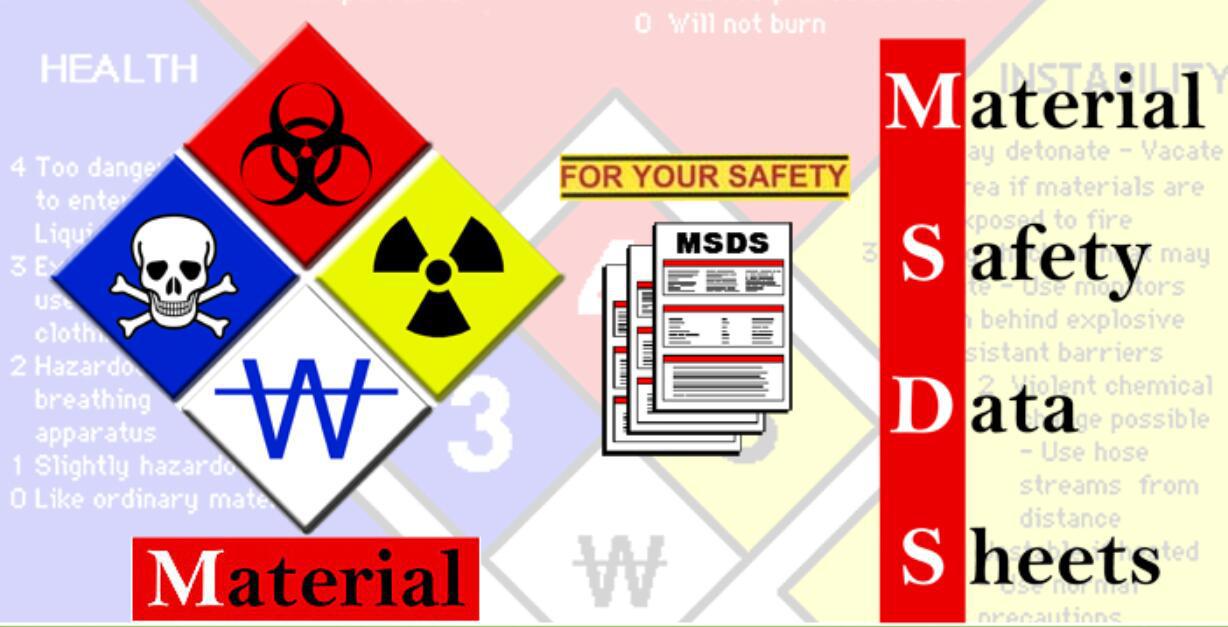
MSDS and SDS What is the difference?
definition:
SDS: SDS is the acronym for Safety Data Sheet, Safety Data Sheet / Safety Instruction Sheet. The content of SDS is defined in Annex II of the REACH Regulation (Directive No .: EC 1907/2006), which was amended by Directive 453/2010 in May 2010.
MSDS: MSDS is the acronym for Material Safety Data Sheet, Material Safety Data Sheet / Material Safety Data Sheet. There are many standards for the preparation of MSDS, mainly the standards set by GHS, ANSI, ISO, OSHA and WHMIS.
SDS: Main contents include chemical and corporate information, hazard identification, composition information, first aid measures, fire fighting measures, leakage measures, handling and storage, exposure control, physical and chemical properties, toxicological information, ecotoxicological information, waste disposal measures, Transport information, regulatory information and other information 16 parts.
Note:
1. In the case of substances registered with REACH, the registration number must be provided on the SDS.
2. For dangerous substances with annual sales over 10 tons, ES (Exposure Scenario) must be added as an attachment to SDS.
3. If the substance or formulation is CSA (Chemical Safety Assessment), the content of the SDS and ES must be consistent with the information in the CSA.
MSDS: Currently, most of the 16 MSDSs are used, with the same title as SDS
The OSHA MSDS has eight components: manufacturer and product information, composition information, physicochemical properties, combustion and explosion data, reactivity data, health hazard data, safe handling and use methods, and protective measures.
WHMIS MSDS has 9 items: Manufacturer and Product Information, Composition Information, Physical and Chemical Properties, Combustion and Explosion Data, Reactivity Data, Toxicological Properties, Precautions, First Aid Measures, Other Information.
MSDS:
1. Countries on the classification of dangerous goods, although each country is not the same laws and regulations, but usually the following 9 categories of dangerous goods:
Category 1 explosives
Class 2 compressed gas and liquefied gas
Category 3 flammable liquids
Category 4 flammable solids, natural items and wet combustible items
Category 5 oxidants and organic peroxides
Category 6 Poisonous and Infectious Goods
Class 7 radioactive material
Class 8 corrosion products
Class 9 miscellaneous
2.Non-hazardous single substance or mixture
With the increasingly strict management of import and export, as well as the plant on the increasing management of product water products, many common products also require the provision of MSDS reports. The most common plastic products, metal products, packaging materials.
3.Although MSDS and SDS are different in content and applicable objects, there are many similarities,
E.g:
1. For dangerous goods, must be provided
2. In the content framework is roughly the same
3. The MSDS or SDS must be promptly updated in accordance with the laws and regulations or product changes
4. All provide basic information for safe use or operation in order to get a more complete picture of the product
4.MSDS, SDS What are the purposes?
1. Customs inspection
2. Danger registration
3 freight forwarding
Customer requirements
5. Foreign customs clearance
6. Enterprise Security Management